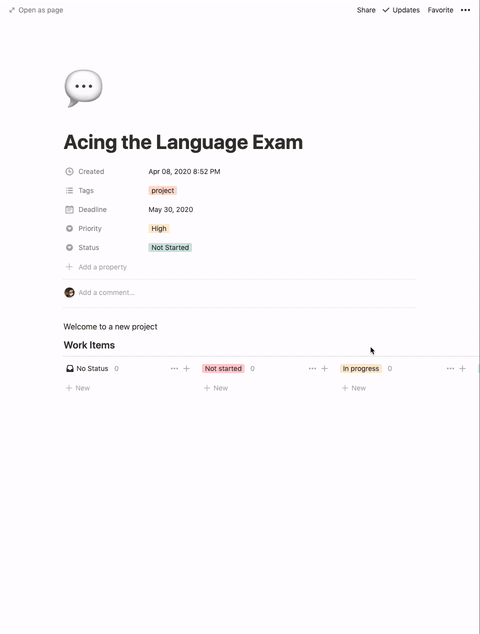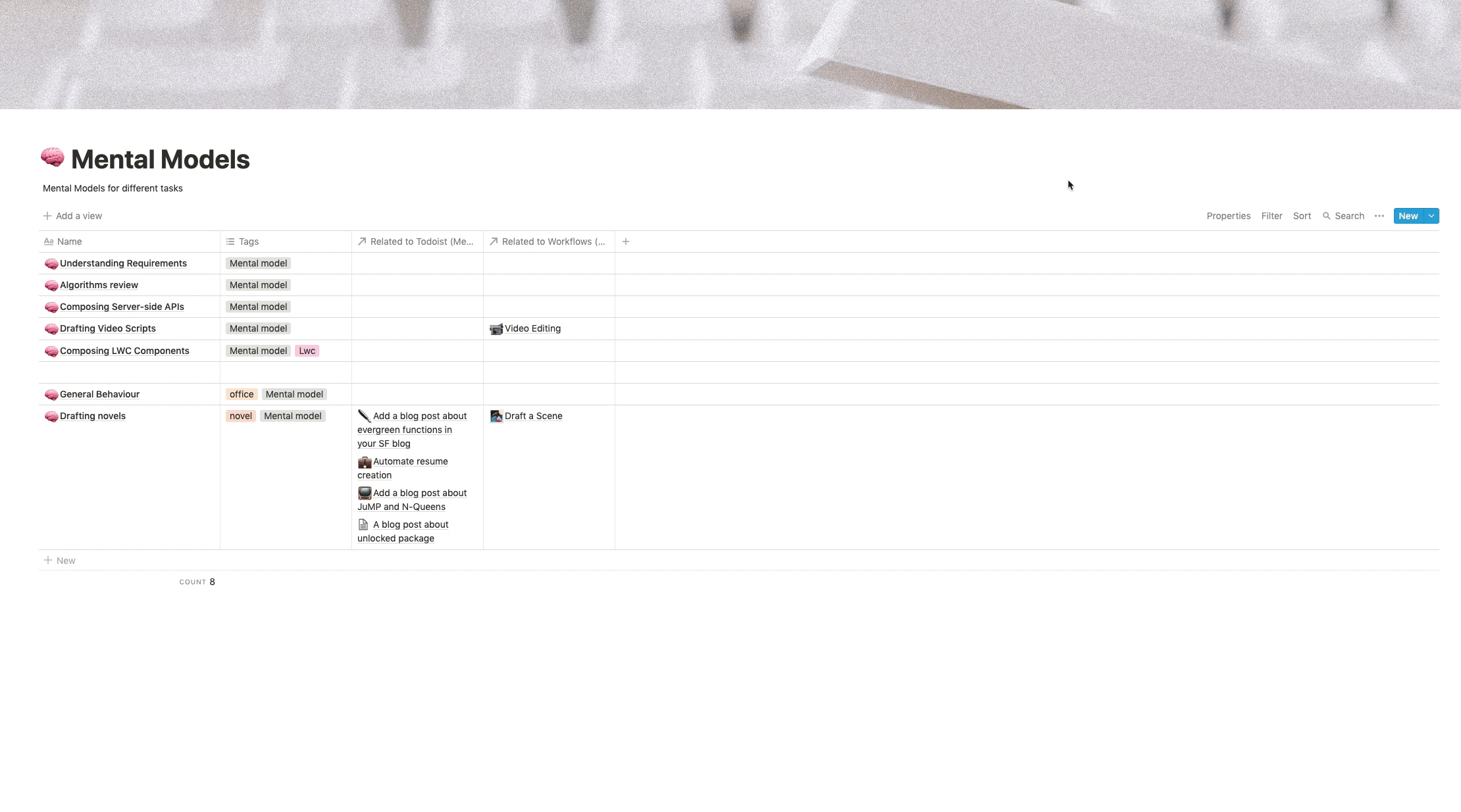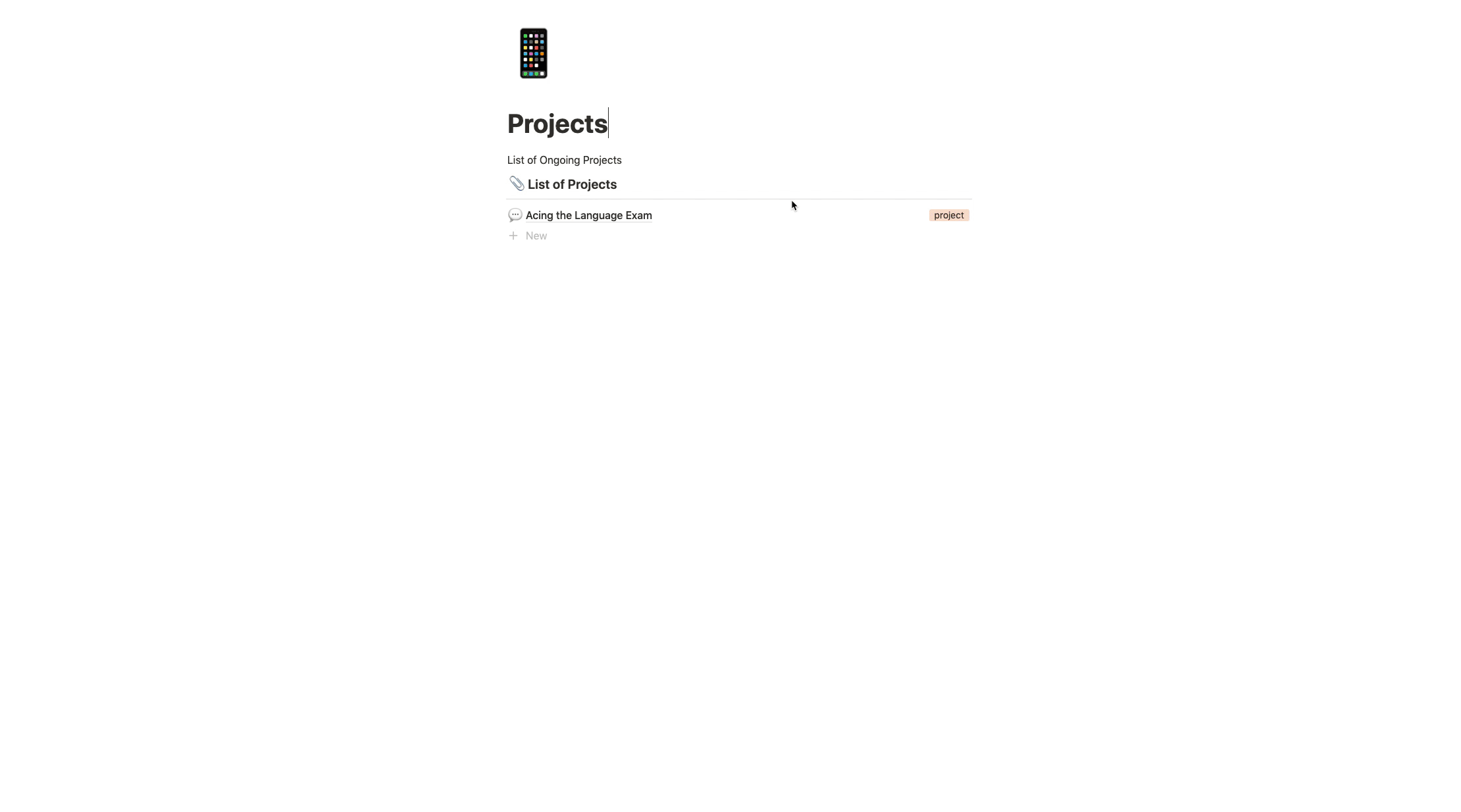From Tasks to New Mental Models
In an earlier post I wrote about a new workflow that I had been following for some time now. I took inspiration from the PARA workflow, mental models, and checklists’ workflow to create a bespoke workflow that spoke to me personally.
I tried to list down my workflow in a linear fashion, which turned out to be too brief. I understand that I could have elaborated on the workflow a bit more. In this post, I wanted to expand upon one of the workflows. How can you create a new mental model or refine an existing mental model by reflecting upon the tasks that you did in any project?
By way of recapitulation, in the post I had introduced a new workflow based on the PARA system and Mental Models. Your completed tasks and your reflection on how you did the job is a useful source for refining or creating a new Mental Model. Let us understand this better using an example.
Example #
Imagine you are trying to learn a new language.
Let us also imagine that you are trying to ace an exam on the language, say, for example GOETHE-ZERTIFIKAT or HSK.
This is an undertaking with a deadline and calls for a new project under our PARA system. Let us create a new project:

One of the arduous tasks of acing any language exam is memorizing many words. To address this, I create tasks every day to learn unfamiliar words and create a database of tasks under this project. I want to learn the words alphabetically I create three-four task to cover the entire alphabet. I can imagine now that many of you might be rolling your eyes or thinking to yourself that this is naïve but stay with me for some more time. Also, I have seen folks use this method to ace the language exams, so this method might not be too far from reality.

After working on the tasks for some time, I realize that my retention of the words is poor. I tend to forget the words from before and have trouble recalling in what sentences I had used the words. Forgetfulness is a deal-breaker because going over the words repeatedly without any retention is Sisyphean.
It turns out that this is a problem with a lot of language learners. Not only language learning, but any memorization task involves secondary labor of creating “stickiness.”. Active Recall is a more efficient way of learning. In “Active Recall,” the learner frames the material in the form of a question or a “hangman” style letters placed on a flashcard with a question. “Spaced Repetition” is a complementary technique for learning new material. In “Spaced Repetition” the material is reviewed many times over staggered intervals. I have experimented with both the techniques with success. So I stumble upon a new mental model - “Active Recall and Spaced Repetition” and make an entry in the “Mental Models” database.
We make a new entry in our Mental Models database titled “Active Recall.” You can add more content or bullet-points with time on this page.

Last but not least, we create a new template for the language learning task, and we add a property linking to the mental model that we just created.
The documentation part of this workflow might seem like a chore at first but will be helpful only after you have created a repertoire of Mental Models. This documentation serves two purposes – posterity and automation. Having codified the mental model such, you will find that you can go back and refine it more. Also, you have automated a large part of thinking about memorization with this paradigm shift. Any breakthrough insight counts as a new Mental Model.
Summary #
In this short post, I expanded on how new tasks and reflection upon how we did the job can make us rethink about what mental models to use. And all this is documented in Notion!
In later posts, I will expand on how everyday reading can also lead us to refine our mental models.